25+ SAMPLE Pre Construction Checklist
-
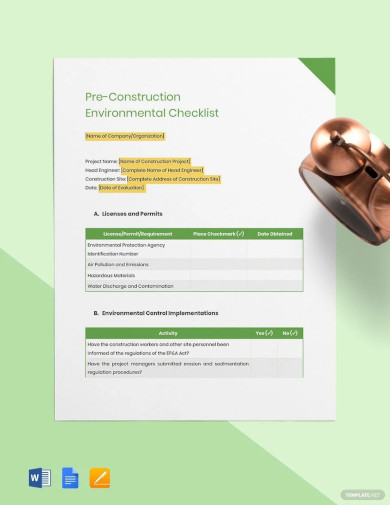
Pre-Construction Environmental Checklist
download now -
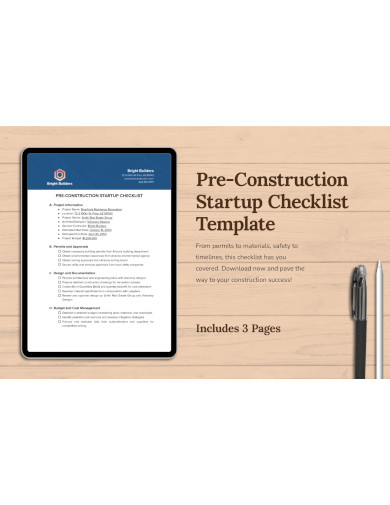
Pre-Construction Startup Checklist
download now -
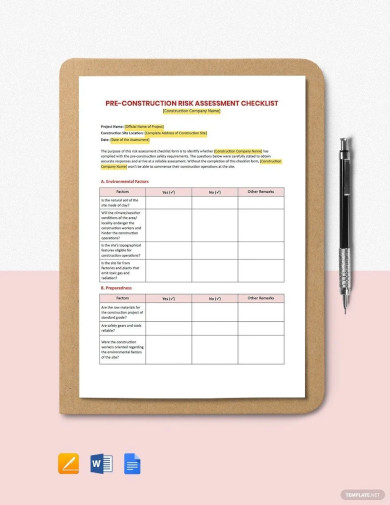
Pre-Construction Risk Assessment Checklist
download now -
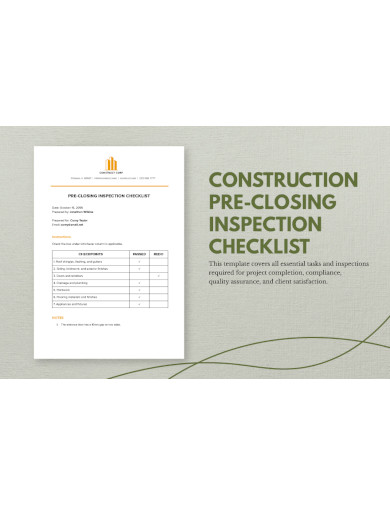
Construction Pre-Closing Checklist
download now -
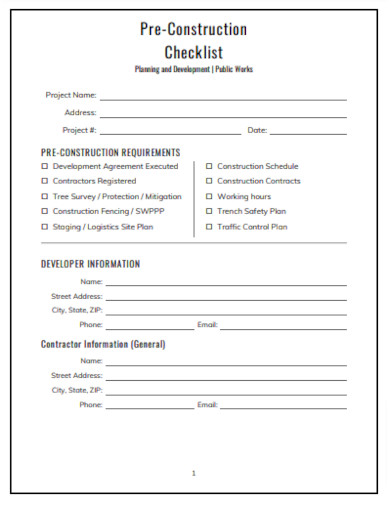
Pre-Construction Checklist
download now -
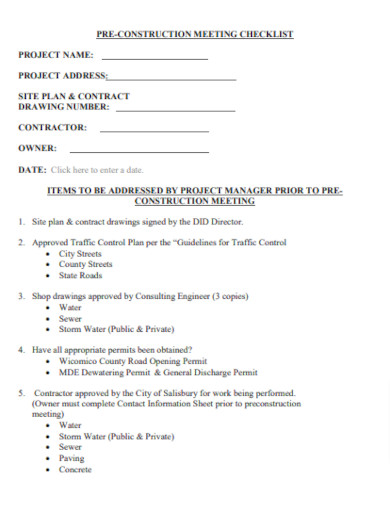
Pre-Construction Project Checklist
download now -
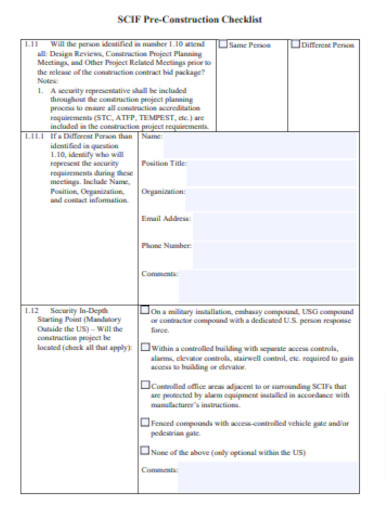
Building Pre Construction Checklist
download now -
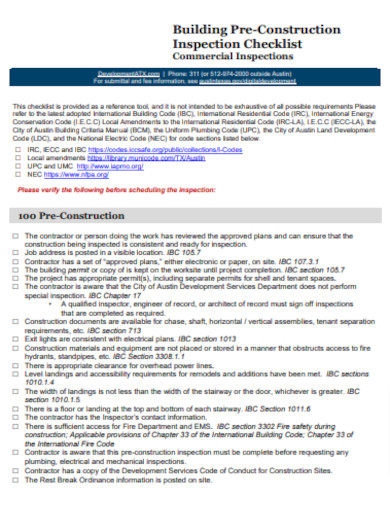
Building Pre Construction Inspection Checklist
download now -
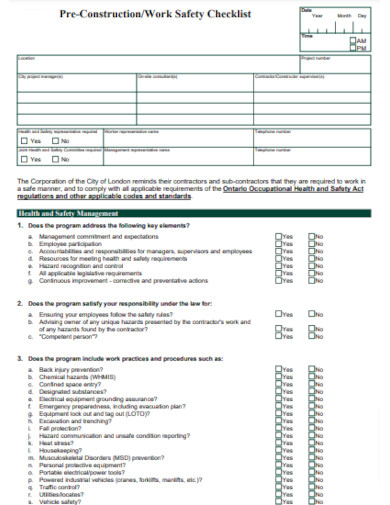
Pre-Construction Safety Checklist
download now -
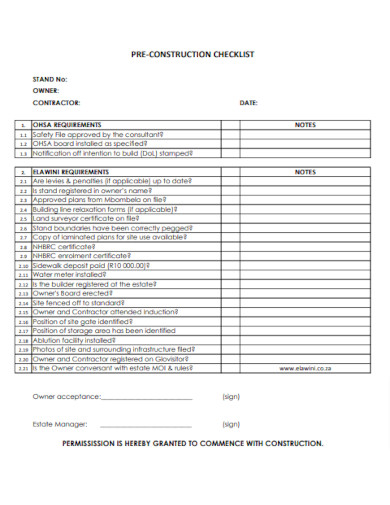
Sample Pre Construction Checklist
download now -
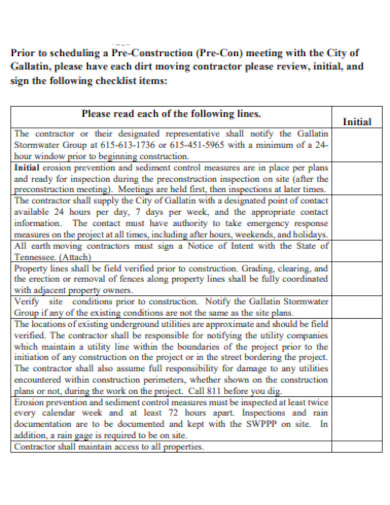
Pre Construction Stormwater Checklist
download now -
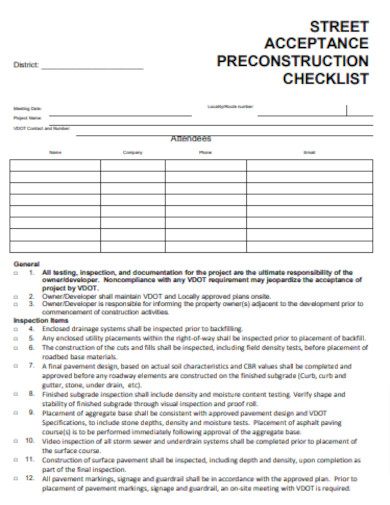
Pre Construction Acceptance Checklist
download now -
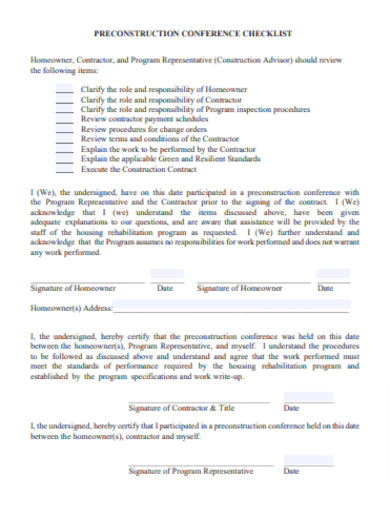
Pre Construction Conference Checklist
download now -
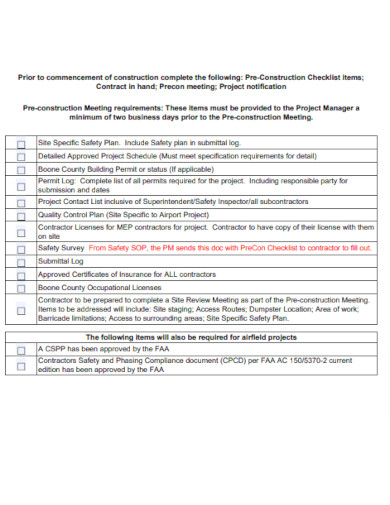
Pre Construction Planning Checklist
download now -
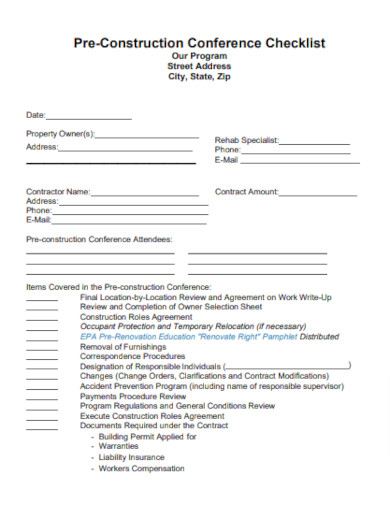
Simple Pre Construction Checklist
download now -
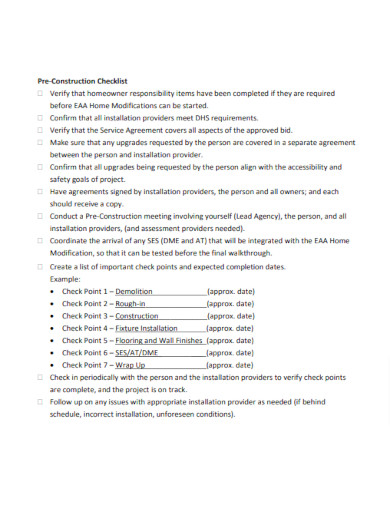
Printable Pre Construction Checklist
download now -
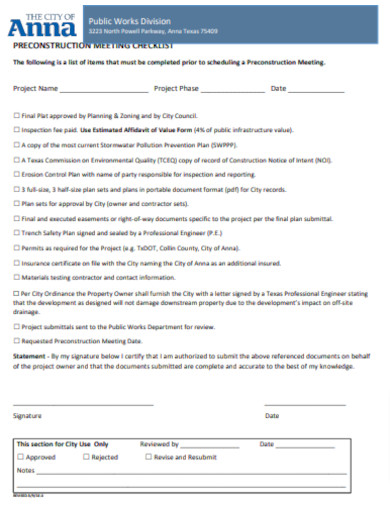
Pre Construction Meeting Checklist
download now -
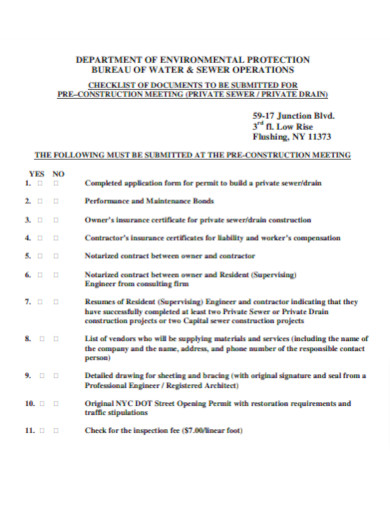
Basic Pre Construction Checklist
download now -
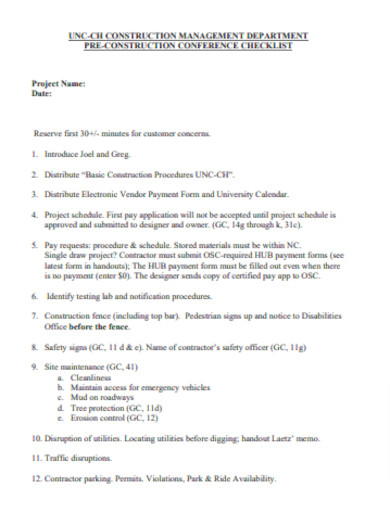
Pre Construction Management Checklist
download now -
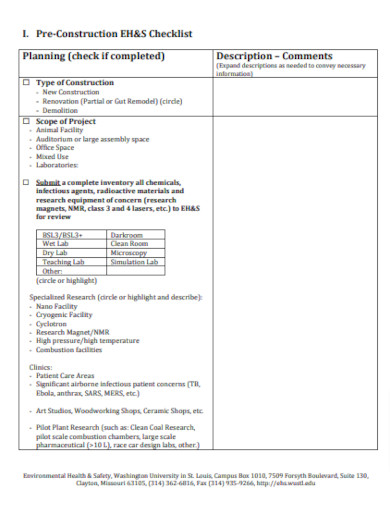
Pre Construction Environmental Health Checklist
download now -
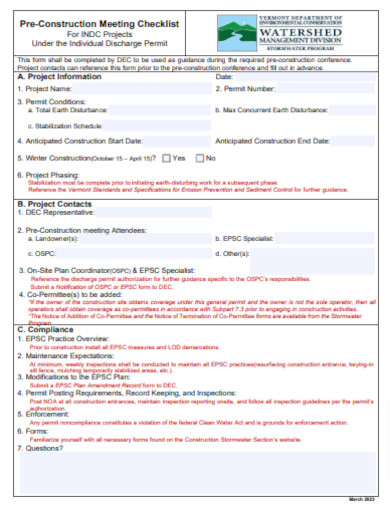
Pre Construction Checklist Outline
download now -
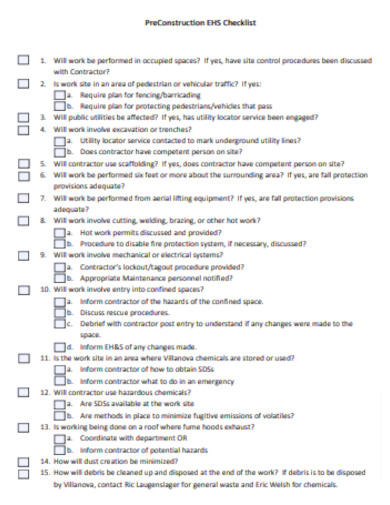
Pre Construction EHS Checklist
download now -
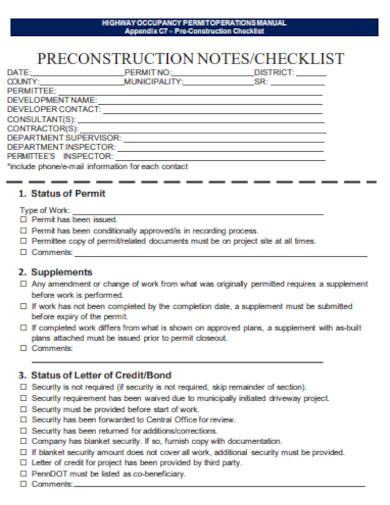
Pre Construction Notes Checklist
download now -
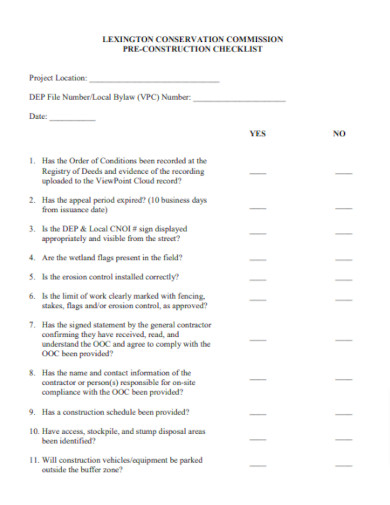
Editable Pre Construction Checklist
download now -
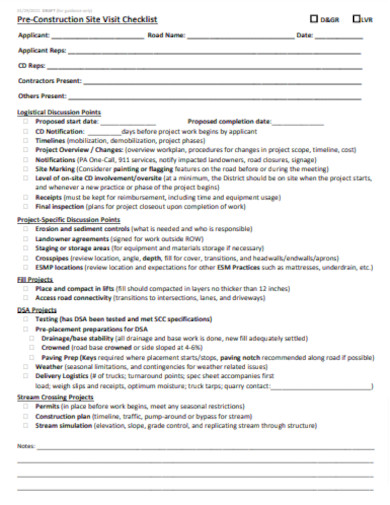
Pre Construction Site Visit Checklist
download now -

Pre Construction Checklist Layout
download now
FREE Pre-Construction Checklist s to Download
25+ SAMPLE Pre Construction Checklist
1. Initial Consultation and Research:
2. Assembling Your Team:
3. Budgeting and Financing:
4. Design Phase:
5. Site Evaluation:
6. Permits and Licenses:
7. Timeline and Scheduling:
8. Risk Management:
9. Communication Protocols:
10. Material Procurement and Vendor Management:
11. Workforce Planning:
12. Sustainability and Environmental Considerations:
The Benefits of a Pre-Construction Checklist: An Investment in Successful Project Outcomes
Why Is the Preconstruction Phase Important?
FAQ’S
Who should be involved in creating a pre-construction checklist?
How does a pre-construction checklist aid in budgeting?
Does the checklist consider environmental and community factors?
Is the checklist a static document?
What if a construction project starts without a pre-construction checklist?
The initial steps in the construction industry hold profound implications for the outcome of a project. Thus, comprehensive planning during the pre-construction phase isn’t just recommended—it’s essential. This phase is akin to laying the keel for a ship; its alignment and robustness determine the vessel’s course and resilience. To elucidate the intricacies of the pre-construction process, we delve deeper into each section of the pre-construction checklist, offering insights and best practices.
1. Initial Consultation and Research:
a. Project Vision Clarification: Establishing clarity is the first step. Engage in discussions with stakeholders to understand the project’s goals, the functions the structure must serve, and the architectural aesthetics desired. This vision roadmap will be the guiding star for all subsequent decisions.
b. Feasibility Study: This involves a thorough analysis that factors in potential costs, location benefits, and logistical challenges. A project might be fantastic on paper, but real-world constraints could make it unviable.
c. Research Building Codes: Each municipality will have its set of regulations concerning construction. This research prevents legal complications and ensures that the design adheres to safety and zoning rules.
2. Assembling Your Team:
a. Architect Selection: The architect transforms the vision into a tangible design. Review portfolios, consider their experience with similar projects, and assess their compatibility with your team dynamics.
b. Contractor Engagement: Contractors bring designs to life. Early engagement ensures the design is both ambitious and grounded in construction realities.
c. Specialist Consultation: Some projects demand niche expertise. For instance, a green building might require consultants familiar with sustainable technologies and materials.
3. Budgeting and Financing:
a. Preliminary Budget Estimation: This broad outline, based on initial designs, offers a financial framework. It aids stakeholders in making informed decisions about scope, scale, and design features.
b. Secure Financing: Determine how to fund the project, considering options such as construction loans, private investors, or company funds.
c. Contingency Planning: Construction is notorious for unforeseen expenses. A contingency fund safeguards against unexpected costs without derailing the project.
4. Design Phase:
a. Preliminary Designs: Sketches and basic models allow stakeholders to visualize the project and make initial adjustments.
b. Detailed Architectural Plans: This is a meticulous representation of the final structure—each room, floor, and facade is detailed, ensuring everyone’s expectations align.
c. Structural, Electrical, and Plumbing Plans: Beyond the building’s look, these plans determine its functionality, ensuring systems work harmoniously and adhere to safety standards.
5. Site Evaluation:
a. Site Survey: Every site has its quirks—elevations, depressions, existing structures. A thorough survey offers insights into how the design must adapt to the site’s specifics.
b. Soil Testing: Different soil types have varied load-bearing capacities. Soil tests ensure that the foundation design suits the site’s ground conditions.
c. Environmental Impact Assessment: Beyond just adhering to regulations, this assessment ensures the project harmoniously coexists with its environment.
6. Permits and Licenses:
a. Building Permits: Securing these legal permissions ensures the project adheres to local construction standards, safeguarding against future liabilities.
b. Environmental and Zoning Clearances: Such clearances ensure the building suits its locale, whether it’s an industrial, residential, or commercial zone.
c. Utility Connections: Early permissions for utilities ensure that, post-construction, the building is promptly functional.
7. Timeline and Scheduling:
a. Phased Planning: By categorizing the project into phases, teams can focus on meeting specific objectives, ensuring systematic progress.
b. Milestone Identification: Milestones act as checkpoints, offering clear indications of progress and keeping the project on track.
c. Buffer Allocation: Whether it’s unforeseen weather delays or supply chain disruptions, buffers ensure timelines are realistic.
8. Risk Management:
a. Risk Identification: Proactively listing potential setbacks, from labor strikes to material shortages, prepares the team for challenges.
b. Risk Assessment: Prioritize risks based on their impact and likelihood. This ensures resources are allocated to address the most significant threats.
c. Mitigation Planning: For every identified risk, have a strategy, be it alternative suppliers or backup labor sources.
9. Communication Protocols:
a. Stakeholder Engagement: Effective projects maintain clear lines of communication with all involved parties—from investors to contractors. Regular meetings, updates, and consultations ensure everyone is on the same page.
b. Conflict Resolution Mechanisms: Where there are numerous stakeholders, conflicts might arise. Establish clear protocols for addressing and resolving disputes, fostering a harmonious project environment.
c. Reporting Systems: Whether it’s daily site reports, weekly progress charts, or monthly financial updates, a systematized reporting structure ensures timely, accurate, and transparent data dissemination.
10. Material Procurement and Vendor Management:
a. Material Sourcing: Selecting the right materials affects both the project’s quality and budget. Research suppliers, considering factors like quality, cost, and delivery timelines.
b. Vendor Contracts: Once suppliers are chosen, draft clear contracts detailing delivery schedules, quality assurances, and payment terms, reducing ambiguities later.
c. Quality Assurance Protocols: Establish regular checks and audits for materials delivered, ensuring they adhere to stipulated quality standards.
11. Workforce Planning:
a. Skill Assessment: Determine the skill sets required for the project—masons, electricians, plumbers—and ensure you have access to the right talent.
b. Training Programs: Before the main construction phase, conduct training sessions. These could be safety drills, machinery operation tutorials, or protocol briefings.
c. Workforce Welfare: Ensure provisions for worker safety, proper accommodation, and healthcare. A cared-for workforce is more productive and loyal.
12. Sustainability and Environmental Considerations:
a. Green Building Principles: If aiming for a sustainable structure, integrate green building principles right from the design phase. This might involve passive solar designs, rainwater harvesting systems, or energy-efficient materials.
b. Waste Management: Develop a system for waste disposal, especially for hazardous materials. Consider recycling or reusing materials where feasible.
c. Local Community Engagement: For larger projects, especially in populated areas, engage with the local community. Address their concerns, take feedback, and, if possible, incorporate community-beneficial features in the project.
The Benefits of a Pre-Construction Checklist: An Investment in Successful Project Outcomes
A pre-construction checklist is not merely a list of tasks—it’s a strategic tool that can provide a myriad of advantages to construction stakeholders. From guaranteeing better project outcomes to ensuring cost-effectiveness, the benefits of such a checklist are manifold. In this article, we delve into the reasons why a pre-construction checklist is indispensable for anyone embarking on a construction journey.
1. Clear Vision and Direction:
A well-structured checklist provides clarity, defining the project’s objectives, scope, and desired outcomes. This ensures that all stakeholders, from architects to investors, share a unified vision, reducing miscommunication and misaligned expectations.
2. Comprehensive Budgeting:
With a checklist in hand, professionals can make more accurate cost estimations. This aids in securing appropriate financing, ensuring that the project doesn’t stall due to budgetary constraints. It also allows for an effective contingency plan, safeguarding against unforeseen expenses.
3. Enhanced Team Coordination:
A checklist breaks down the project into detailed tasks and milestones. This allows for better delegation, ensuring that each team member understands their responsibilities and timelines, leading to more coordinated and efficient work sequences.
4. Risk Mitigation:
Identifying potential risks early on is a cornerstone of successful project management. A pre-construction checklist helps in pinpointing potential challenges, be it environmental, logistical, or financial, allowing for proactive solutions and contingency planning.
5. Regulatory Compliance:
The checklist ensures that all regulatory requirements, from building codes to environmental impact assessments, are taken into account. This not only avoids legal complications but also ensures the project’s long-term viability.
6. Streamlined Decision-Making:
Having a pre-determined framework helps in faster, more informed decision-making. Should an issue arise, stakeholders can refer to the checklist to understand the project’s parameters and make decisions that align with the established objectives.
7. Improved Resource Allocation:
By detailing tasks and requirements in advance, managers can more effectively allocate resources, be it manpower, machinery, or materials. This prevents wastage and ensures that resources are used optimally.
8. Time Efficiency:
A pre-construction checklist, with its phased planning and milestone identification, provides a clear roadmap for the project. This reduces delays caused by unplanned events or decision-making bottlenecks.
9. Stakeholder Confidence:
A comprehensive checklist demonstrates professionalism and thoroughness. This can boost the confidence of stakeholders, be it investors, clients, or regulatory bodies, ensuring smoother collaborations and negotiations.
10. Environmental and Community Considerations:
Modern construction isn’t just about erecting structures—it’s about building in harmony with the environment and community. A checklist ensures that such considerations aren’t overlooked, resulting in projects that are sustainable and community-friendly.
11. Cost Savings:
Although it may seem counterintuitive, investing time in thorough pre-construction planning can lead to significant cost savings. By identifying the best material suppliers, optimizing resource allocation, and avoiding regulatory fines or reworks, the project can be executed more economically.
12. Quality Assurance:
With a clear plan in place, the quality of work can be consistently maintained. Each stage of construction, from site preparation to final finishes, can be executed to the highest standards, leading to a superior end product.
Why Is the Preconstruction Phase Important?
In the field of construction, although the ultimate structure is what receives praise, the true key to success often remains concealed in the background—the preconstruction phase. Similar to an iceberg where most of its mass is submerged, in construction, the preconstruction phase is the unseen yet crucial factor that shapes the project’s path.
The importance of the preconstruction phase is undeniable. It forms the bedrock upon which the entire project stands. By ensuring meticulous planning, clear communication, and comprehensive assessment, this phase acts as the project’s North Star, guiding it towards success. In the symphony of construction, if the final building is the crescendo, the preconstruction phase is the essential composition that orchestrates every note to perfection.
FAQ’S
Who should be involved in creating a pre-construction checklist?
Typically, a combination of project managers, architects, engineers, contractors, and sometimes even clients or investors collaborate to develop a comprehensive pre-construction checklist.
How does a pre-construction checklist aid in budgeting?
By detailing every aspect of the project in advance, from material sourcing to manpower requirements, the checklist provides a clearer picture of anticipated costs. This aids in establishing a detailed budget and securing appropriate financing.
Does the checklist consider environmental and community factors?
In modern construction practices, a comprehensive pre-construction checklist often integrates environmental impact assessments and community considerations, ensuring that the project is sustainable and harmonizes with its surroundings.
Is the checklist a static document?
While the checklist is developed during the pre-construction phase, it can be dynamic. As the project progresses, new insights or challenges might necessitate adjustments. Regular reviews of the checklist are advisable to ensure its continued relevance.
What if a construction project starts without a pre-construction checklist?
While it’s possible to commence a project without such a checklist, it significantly increases the risk of oversights, miscommunications, delays, and budget overruns. A pre-construction checklist acts as a safety net, ensuring that every potential aspect has been considered.
The pre-construction phase, with its exhaustive planning and analysis, can seem daunting. However, it’s this meticulous groundwork that ensures a project’s success. By understanding and embracing each facet of the pre-construction checklist, stakeholders can anticipate challenges, devise solutions, and embark on construction with confidence. This process doesn’t just build structures—it builds trust, clarity, and a legacy of excellence.
